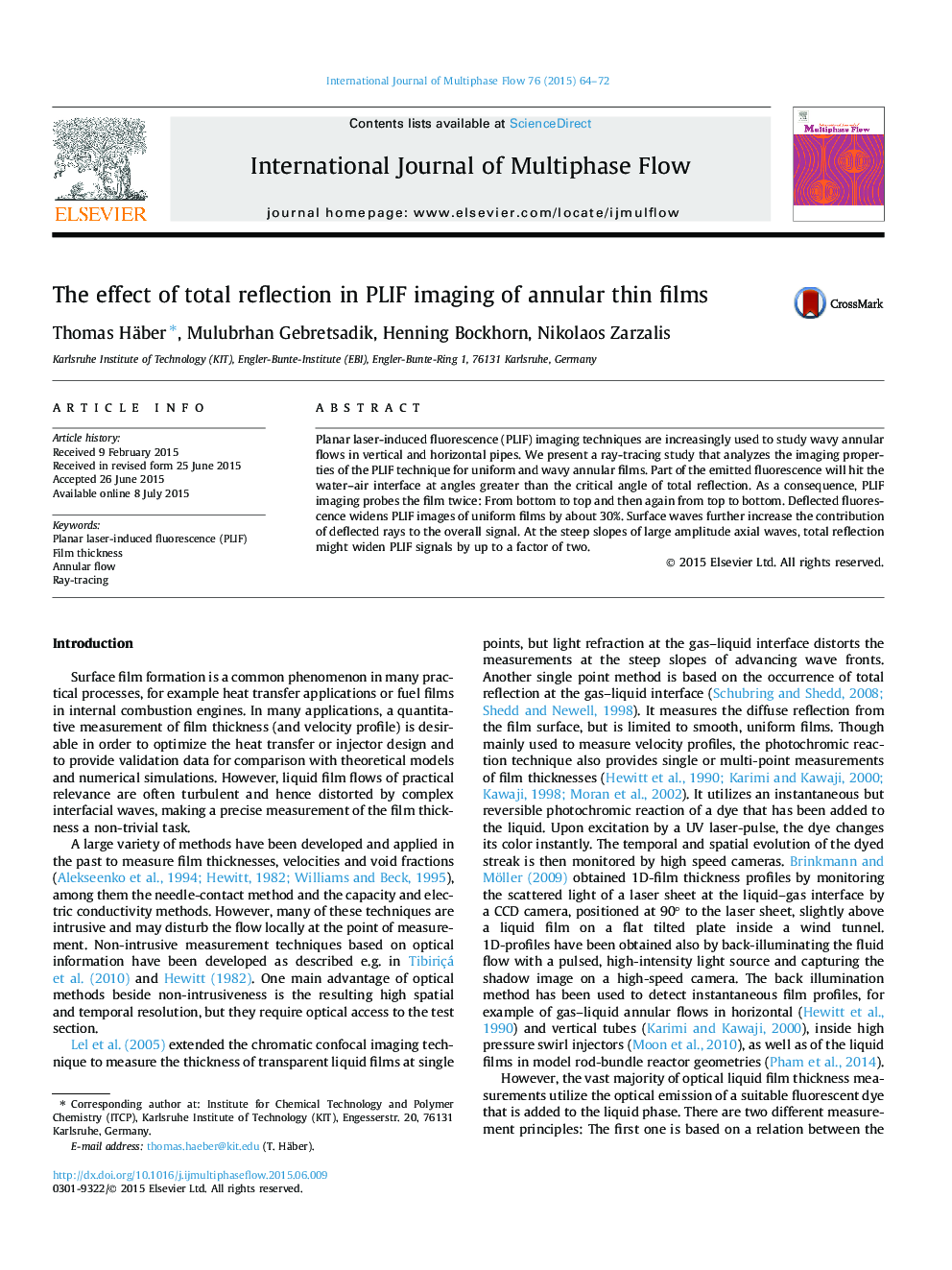| Article ID | Journal | Published Year | Pages | File Type |
|---|---|---|---|---|
| 667104 | International Journal of Multiphase Flow | 2015 | 9 Pages |
•Ray-tracing analysis of PLIF imaging techniques applied to thin annular films.•The gas–liquid interface acts as a mirror.•Reflected fluorescence contributes to image areas where there is no film.•Image signals due to total-reflection are adjacent to the real film image.•Widening of PLIF images leads to an overestimation of film thicknesses.
Planar laser-induced fluorescence (PLIF) imaging techniques are increasingly used to study wavy annular flows in vertical and horizontal pipes. We present a ray-tracing study that analyzes the imaging properties of the PLIF technique for uniform and wavy annular films. Part of the emitted fluorescence will hit the water–air interface at angles greater than the critical angle of total reflection. As a consequence, PLIF imaging probes the film twice: From bottom to top and then again from top to bottom. Deflected fluorescence widens PLIF images of uniform films by about 30%. Surface waves further increase the contribution of deflected rays to the overall signal. At the steep slopes of large amplitude axial waves, total reflection might widen PLIF signals by up to a factor of two.
Graphical abstractFigure optionsDownload full-size imageDownload as PowerPoint slide
